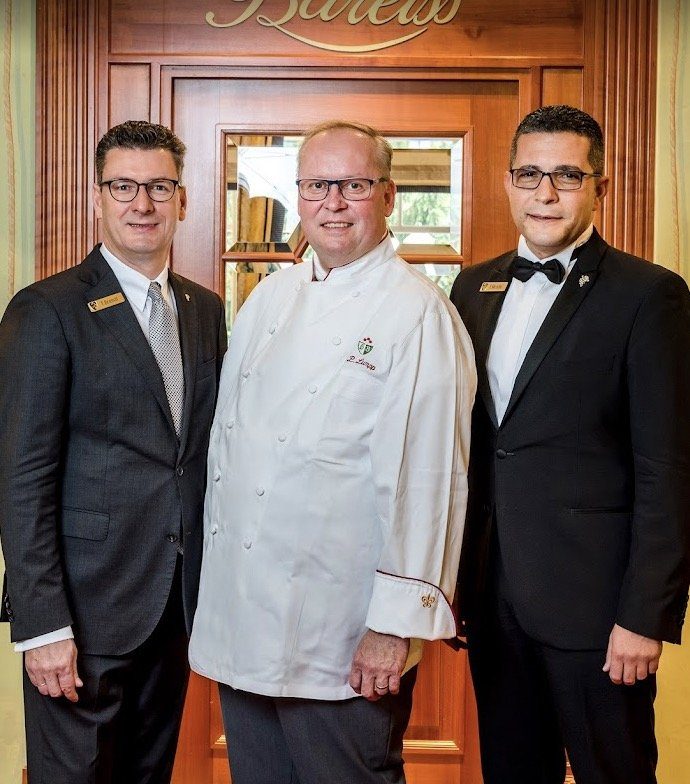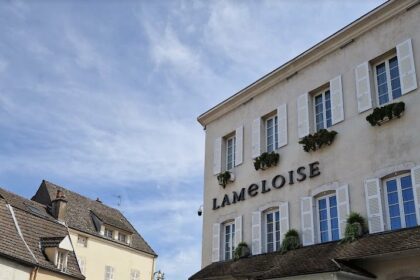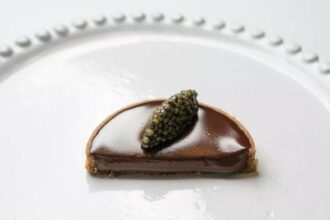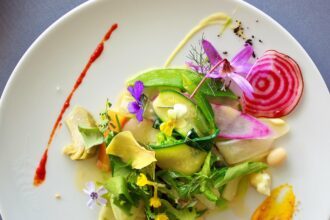Luxurious Generosity
Chef Claus-Peter Lumpp is a true practitioner of Fernand Point’s belief that a great chef should capture the true taste of the food first, but also he/she should delight us with variations. Since French chef Pierre Gagnaire started his experiments to translate this suggestion into practice, “variations around an ingredient” became quite trendy. Say, one orders langoustine. One is presented with five little bites, all with different temperatures, textures, and tastes. Sometimes this idea works, and one can see the potential inherent in a given product or ingredient. But, more often than not, it does not work. The client becomes confused with the constant bombardment of small bites which are often not complimentary, but contrast with one another and tire the palate. For instance, although I will not deny Gagnaire’s talent, I usually feel like watching fireworks in his eponymous restaurant as my brain and palate may not process so many discordant elements.
But one should not throw out this idea when confronted with less than satisfactory examples. Chef Lumpp is very good with variations. I have visited Bareiss several times since 2013 and twice in 2022. He offers both a la carte and a menu degustation. His a la carte dishes are mostly composed of the type of variations I speak of here. I enjoy both such dishes as well as five to six consecutive courses on the menu degustation. When I opt for variations around, say, langoustine, veal, scallop, turbot, or foie gras I always end up satisfied. I appreciate the progression of tastes and my palate does not feel overwhelmed by discordant flavors. His menu degustation is also equally well thought out, progressing beautifully with harmonious flavors. The chef also likes to integrate a contrasting flavor or texture in some of his dishes, but since he does this in a controlled way, his dishes never feel unbalanced.
If I use two words to describe the cooking here, I would say that it is mature and generous. Combined with outstanding service overseen by the director Thomas Brandt, a beautiful and very comfortable dining room, and an excellent sommelier, Mr. Teoman Mazda, a meal at Bareiss, is not only a gastronomic experience, but it is also a testimony to a refined and civilized lifestyle which may be getting rarer and rarer. Compared to the kitsch, insincere attitudes, and self-congratulatory narratives which dominate today’s “fine dining” (well satirized in the movie “The Menu”), an escape to the Black Forest and dining at Bareiss is a breath of fresh air.
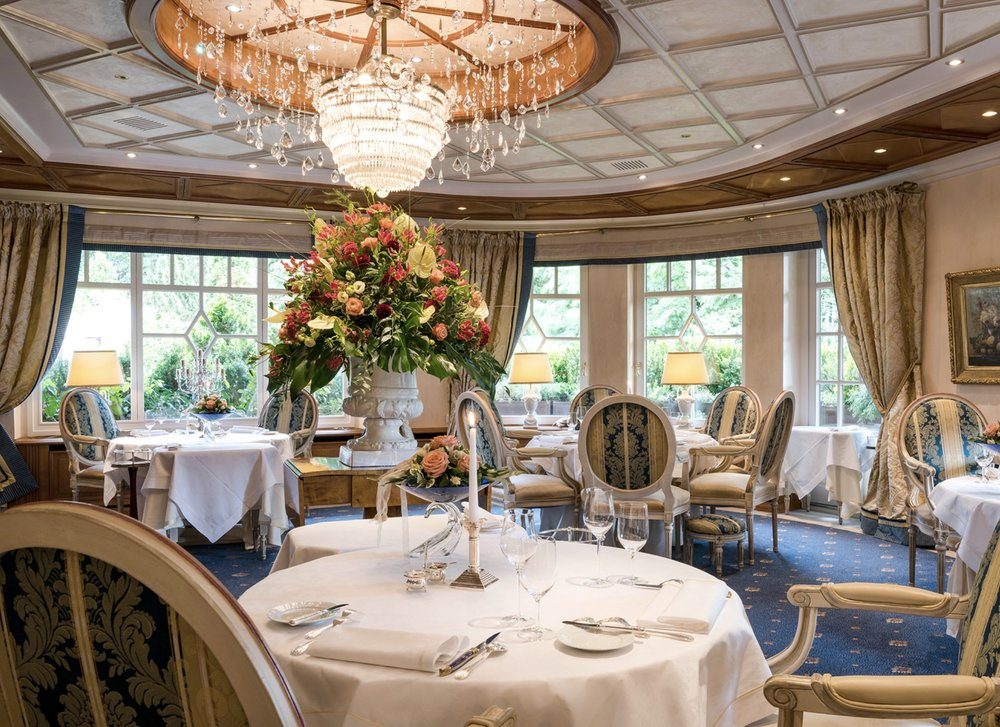
My wife, who rarely asks for foie gras in France, always orders the foie gras a la carte in Bareiss restaurant. The small dishes are different each time, but one always gets cold terrine, fresh hot liver, a crisp tart, a sweet concoction, one very rich and one less rich expression tempered by fruit. Last time we had the following:
- Goose foie gras terrine of marbled goose liver with salted caramel and port;
- Tartlets of burnt goose liver cream and hazelnut;
- Goose liver praline with sesame;
- Fried goose liver with apple and calvados; and
- Goose liver ice-cream with cocoa bean crumbles.
Alternatively, one can taste chef Lumpp’s excellent goose foie gras as part of the menu degustation. This is what we did last Fall. “Variations of foie gras with green apple sour cream and tarragon and almond oil” was aromatic and deeply satisfying, as the chef balanced the natural sweetness and unctuous texture of foie gras with tart apple and nutty oil.
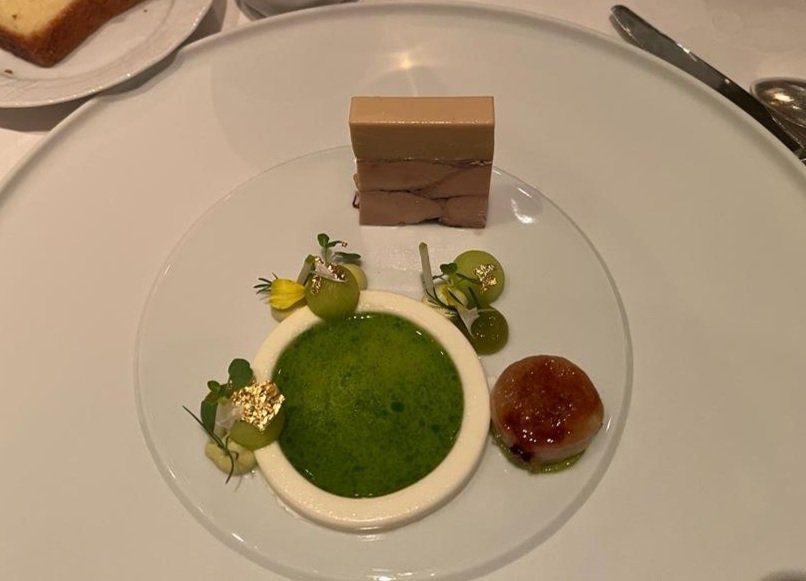
My favorite a la carte dish is langoustine, but when he does not have it, try his multiple takes on the local char fish. One will not be disappointed. Chef Lumpp excels with seafood. He loves to cook turbot, St. Pierre, and also lobster. Sometimes he offers Spanish langostinos or carabineros.
In a recent visit we were served very good quality carabineros, followed by lobster. The carabineros were firm and juicy, and their sweet flavor was complemented well by macerated ripe mango and spicy sweet chile. The crustacean glaze and its own emulsion added umami-like depth, and quinoa imparted a crisp edge. This was good, but I liked the chef’s take on the lobster even more: a trio consisting of a light uplifting lobster tartare with the right amount of tart citrus, sweet saffron, and bitter endive; a delicious warm Breton lobster tail with earthy black carrots, spicy ginger, and an emulsion of its jus with a touch of bergamot aroma (Earl Grey); and, to top it off, a decadently rich lobster gratin Thermidor that nobody dares to prepare in today’s celebrated gastronomic kitchens. The sweetness of the cream balanced perfectly the salty-rich reduction of the carcass, and a generous quantity of medallions of Breton lobster stood their ground against such an onslaught of decadently rich flavors. All three dishes, when consumed consecutively, proved that the chef can concoct delicious and intense dishes without sacrificing the overall harmony.
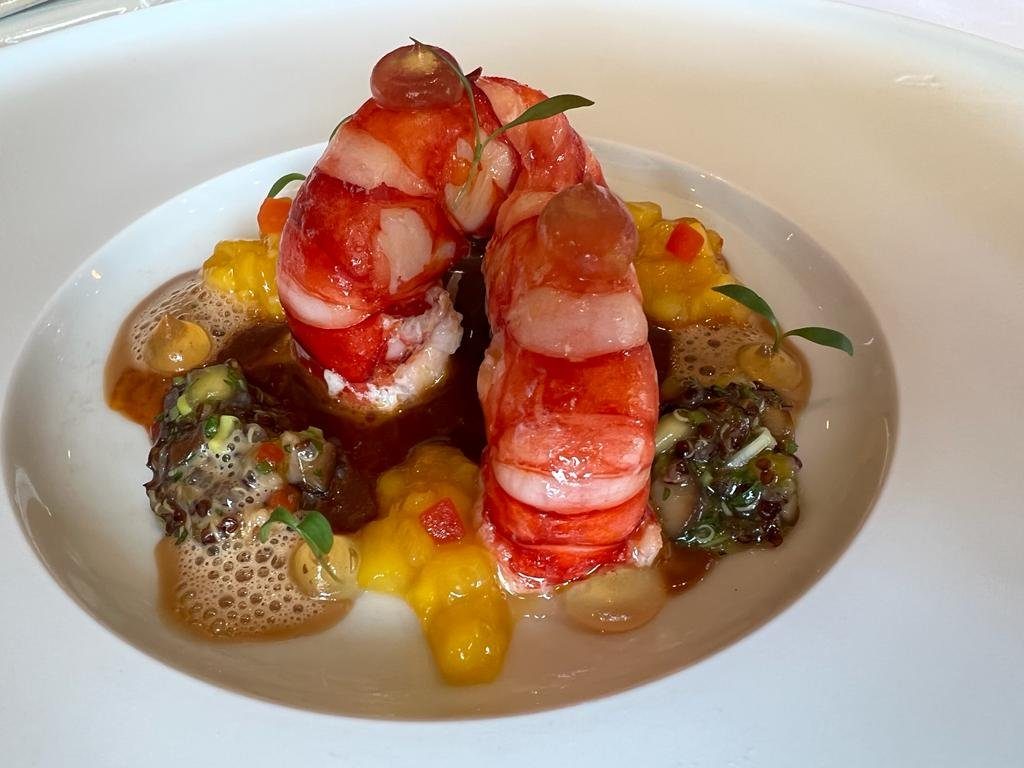
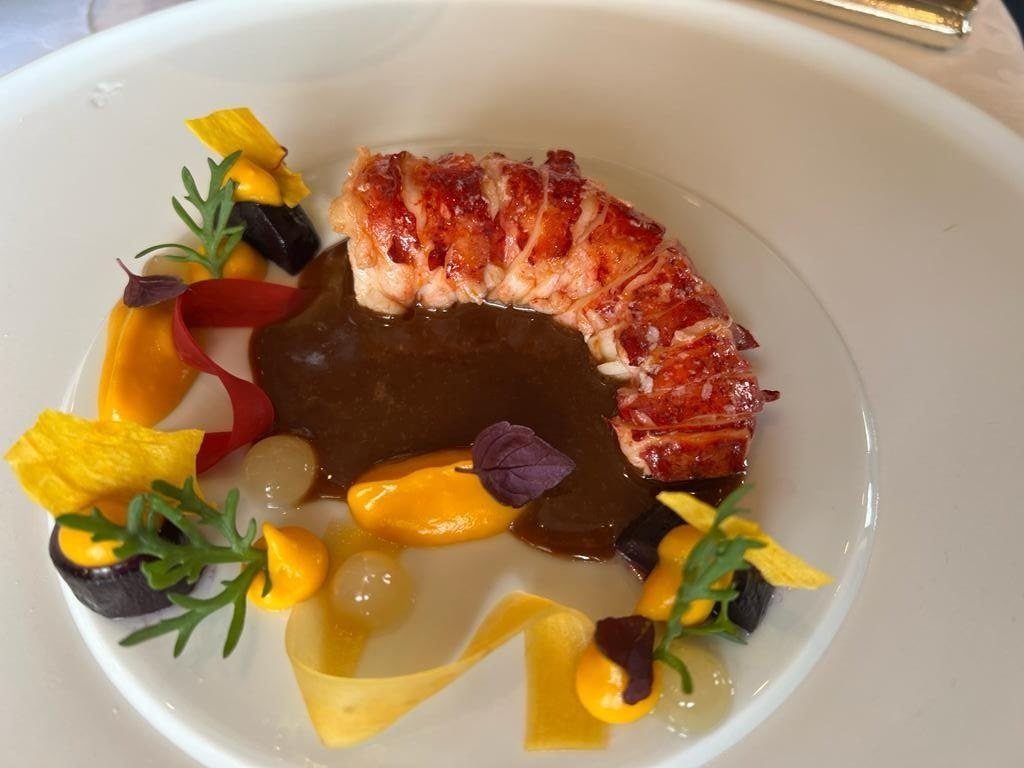
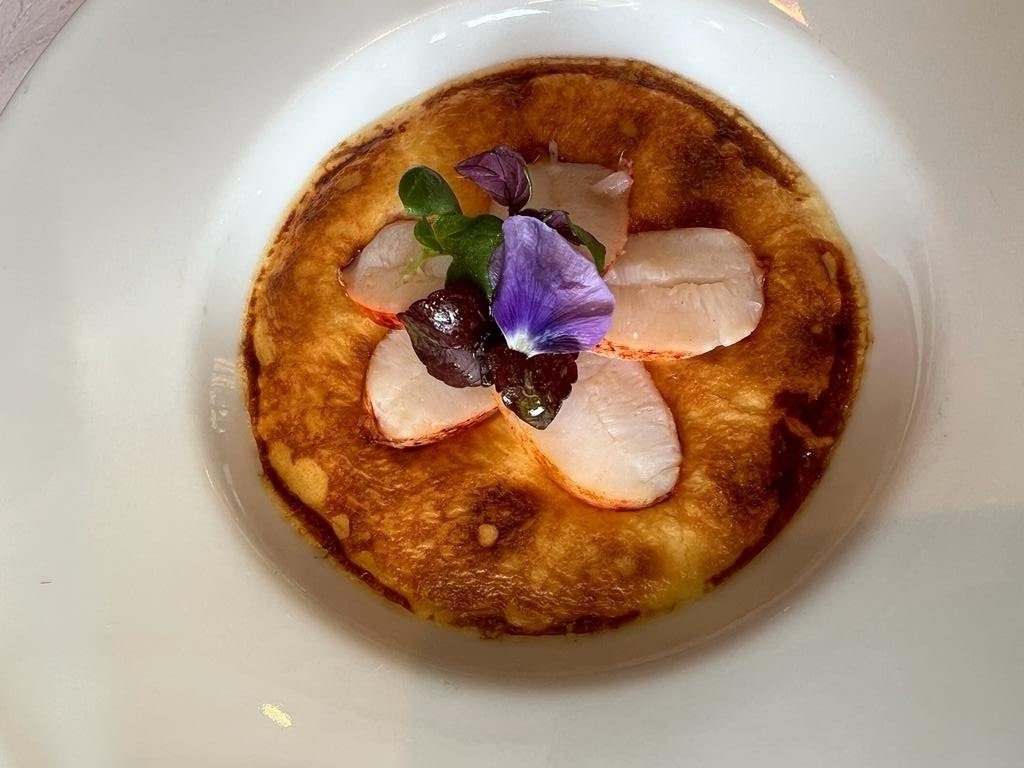
Over the years we tried several meat dishes here. Lamb and pigeon are both excellent. Their presentation follows the same logic of the rest, like the above-mentioned lobster. A tartare or a consommé, followed by a classic preparation, and a final statement exploring the rustic potential and unabashedly rich-fatty parts of the meat. For instance, if it is Alsatian pigeon, expect an excellent consommé, followed by glazed fried breast with celeriac puree and black truffles, and a ragout of the leg with a rich sauce of the goose liver. If one opts for lamb grown in “Alber Wacholderheide” in Rhineland-Palatinate, one can expect to be served not only the noble saddle of lamb, but also the more delicious belly and rustic tongue and spicy chorizo, before concluding with creamy lamb sweetbreads. These various parts of the lamb are all cooked separately and served with different emulsions. Chef Lumpp is an excellent saucier.
This said, my favorite meat here is a game dish: roe deer from the Bareiss hunting grounds. The preparation is very simple: fried saddle with Piedmont hazelnuts, wild cauliflower and jus, followed by the poached cushion (back leg) with cauliflower puree and cranberries. I have tasted many roasted roe deers in quite a few restaurants at all price levels in Europe. I may not single out one as the best, but over the years, I always find the quality here to be memorable. The roe deer here is neither too gamey, nor overly soft, and has a deep, slightly sweet and minerally taste. One can have it with an excellent German pinot noir-spatburgunder from the likes of B. Huber or F. Becker or a juicy Wasenhaus. A Rayas with a sweet exotic spicy nose, melted tannins, silky texture, and soft whistling ripe red berries on the palate may not hurt either.
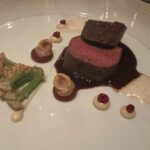
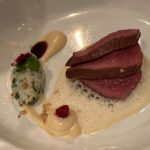
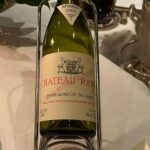
Although the breadbasket is excellent in Bareiss, I recommend consuming very little bread because the cheese quality and selection has always been very satisfactory here. Selections vary, but one can be confident to find mostly French, as well as, Italian, English, and local cheeses in optimum conditions. Cheeses, such as three years old Comte, Epoisse, Salers, Saint Marcellin, English Yorkshire blue, munster, Chablis, etc. are served with various condiments, such as thyme honey, fig jam, quince paste, caramelized hazelnut, etc.
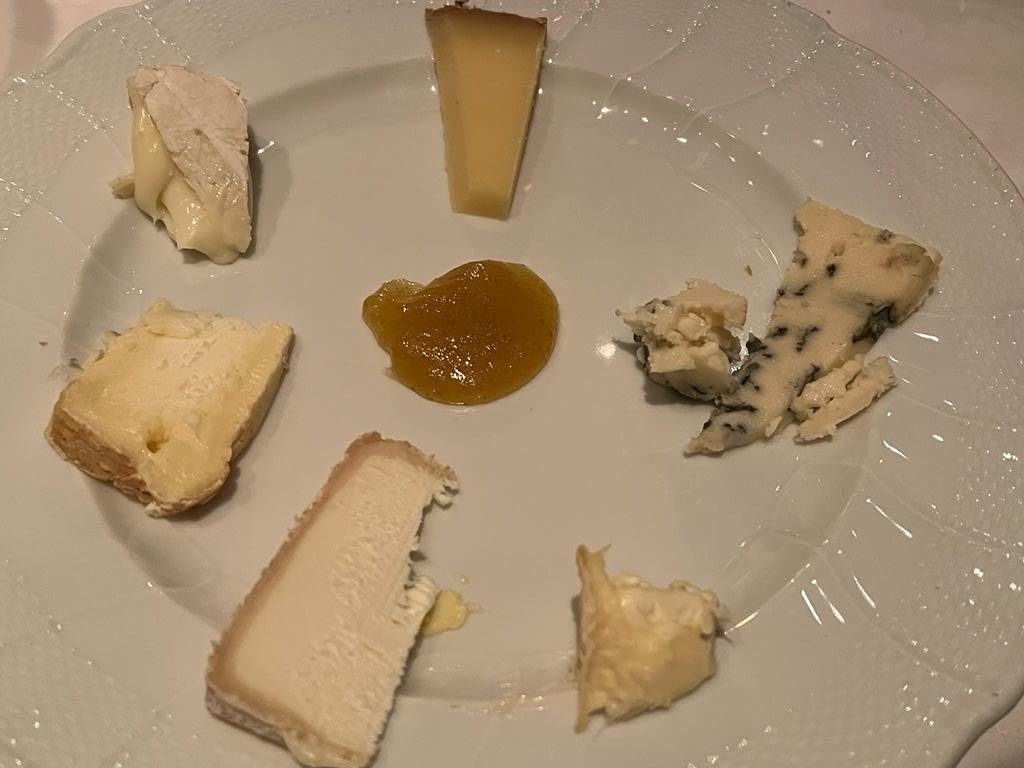
Desserts are good and usually they are composed as three variations of a given ingredient, such as strawberry. For example, strawberry sorbet with dark chocolate, pecan cream and lemon thyme; strawberry granite with lemon and gin foam; coconut parfait with strawberry and yuzu shiso sorbet. They also have very good soufflé. But we rarely have any appetite left after we make our selection from the cheese tray. At the same time, we know that they will present an amazing array of petit fours, bonbons, chocolate covered nuts, chocolate truffles, macaroons and little tarts, in a chariot consisting of several levels. We don’t know any other restaurant which is so generous with sweets to accompany coffee, with the exception of Da Vittorio in Bergamo, Italy.
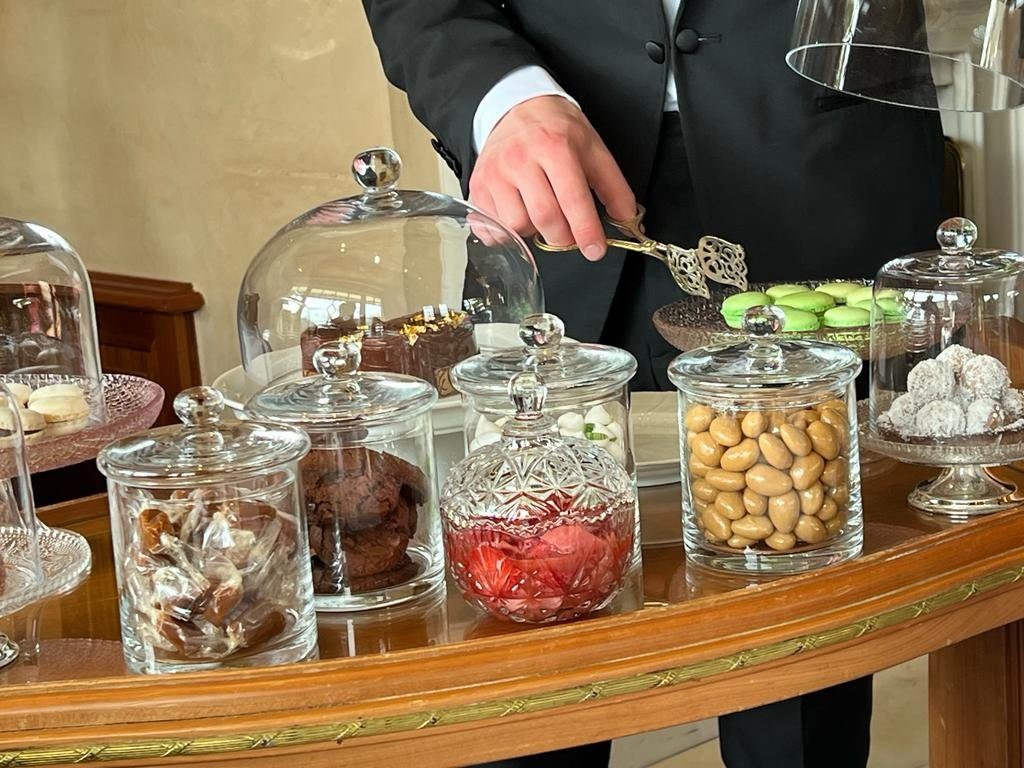
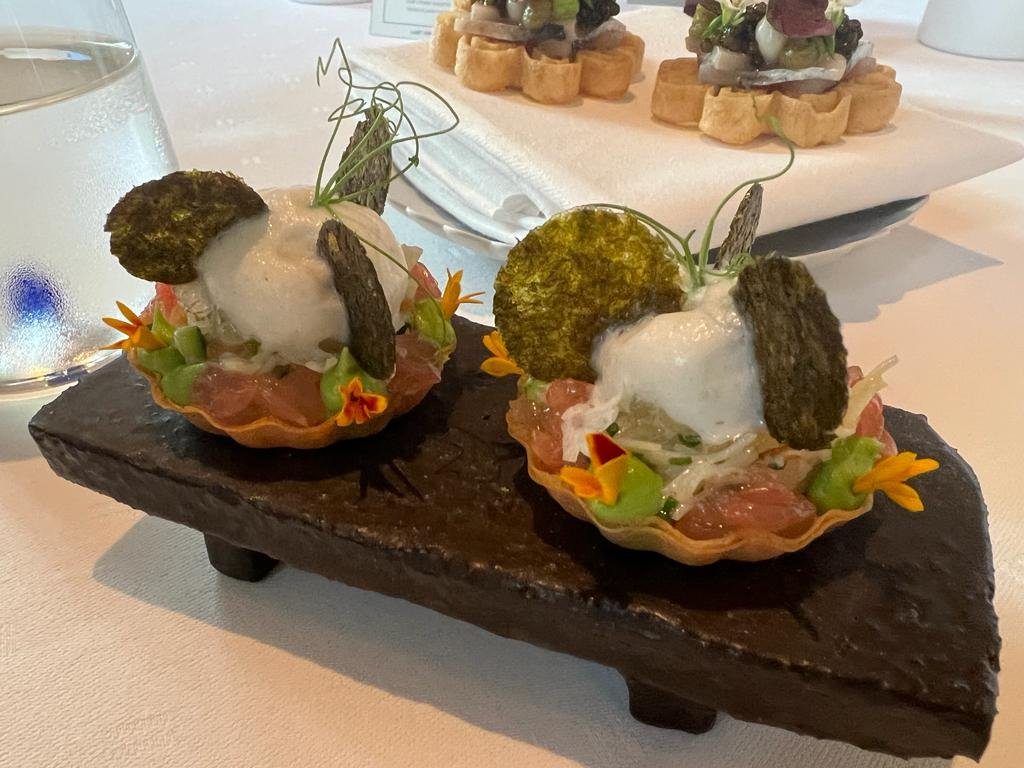
EVALUATION: 19/20
